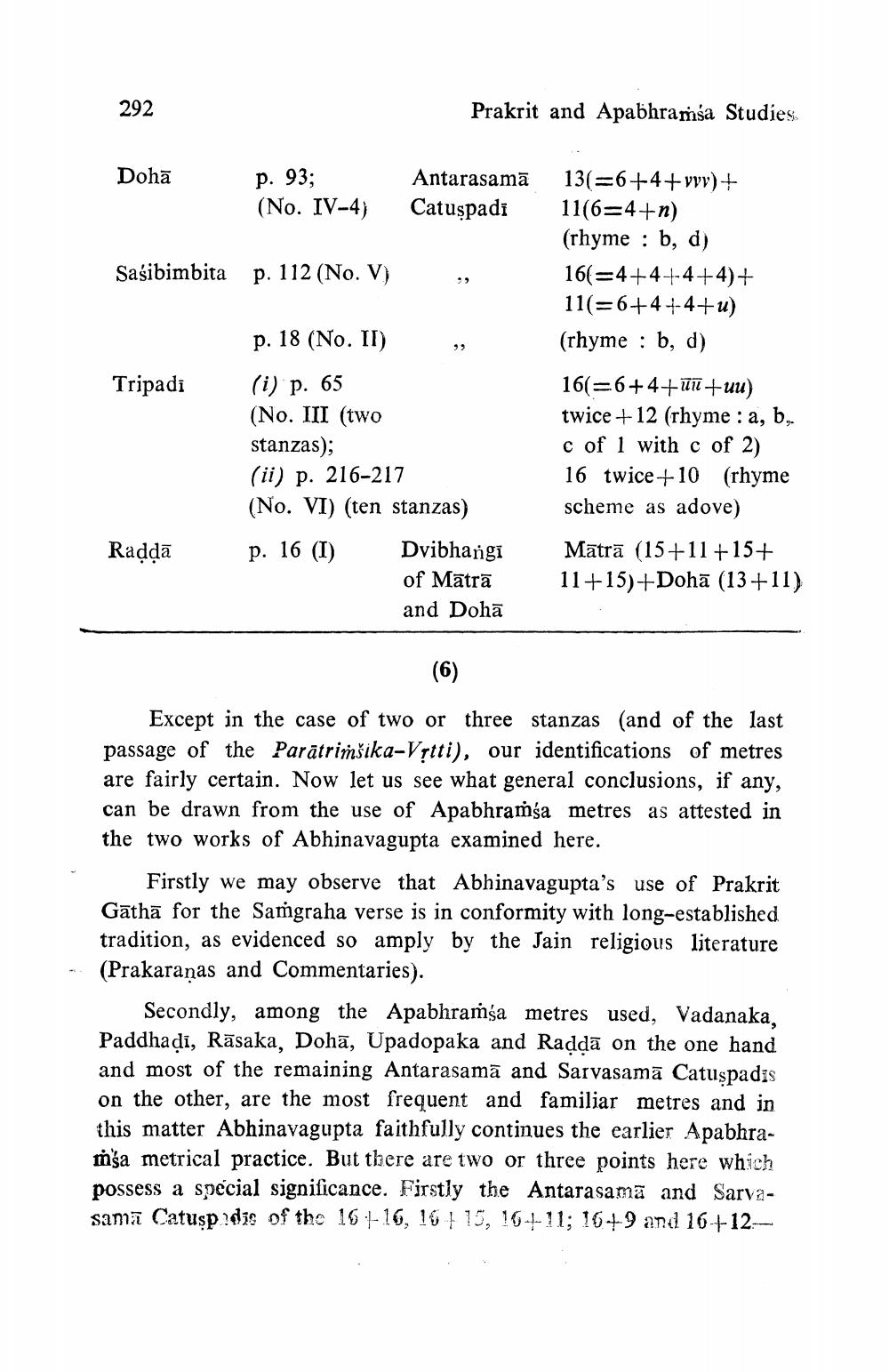________________
292
Prakrit and Apabhramsa Studies
Dohā
p. 93; (No. IV-4)
Antarasamā Catuspadi
Saśibimbita
p. 112 (No. V)
13(=6+4+yyy)+ 116=4+n) (rhyme : b, d) 16(=4+4+4+4)+ 11(=6+4+4+u) (rhyme : b, d)
p. 18 (No. II)
Tripadi
(i) p. 65 (No. III (two stanzas); (ii) p. 216-217 (No. VI) (ten stanzas) p. 16 (1)
Dvibhangi of Mātrā and Dohā
16(=6+4+uu+uu) twice +12 (rhyme : a, b, c of 1 with c of 2) 16 twice+10 (rhyme scheme as adove) Mātrā (15+11+15+ 11+15)+Dohā (13+11)
Raddā
Except in the case of two or three stanzas (and of the last passage of the Parātrimšika-Vrtti), our identifications of metres are fairly certain. Now let us see what general conclusions, if any, can be drawn from the use of Apabhramsa metres as attested in the two works of Abhinavagupta examined here.
Firstly we may observe that Abhinavagupta's use of Prakrit Gathā for the Samgraha verse is in conformity with long-established tradition, as evidenced so amply by the Jain religious literature (Prakaranas and Commentaries).
Secondly, among the Apabhramsa metres used, Vadanaka, Paddha di, Rāsaka, Dohā, Upadopaka and Raddā on the one hand and most of the remaining Antarasamā and Sarvasamā Catuspadis on the other, are the most frequent and familiar metres and in this matter Abhinavagupta faithfully continues the earlier Apabhramsa metrical practice. But there are two or three points here which possess a special significance. Firstly the Antarasama and Sarvasama Catușp?dis of the 16 -16, 16 +15, 16+11; 16+9 and 16--12--




